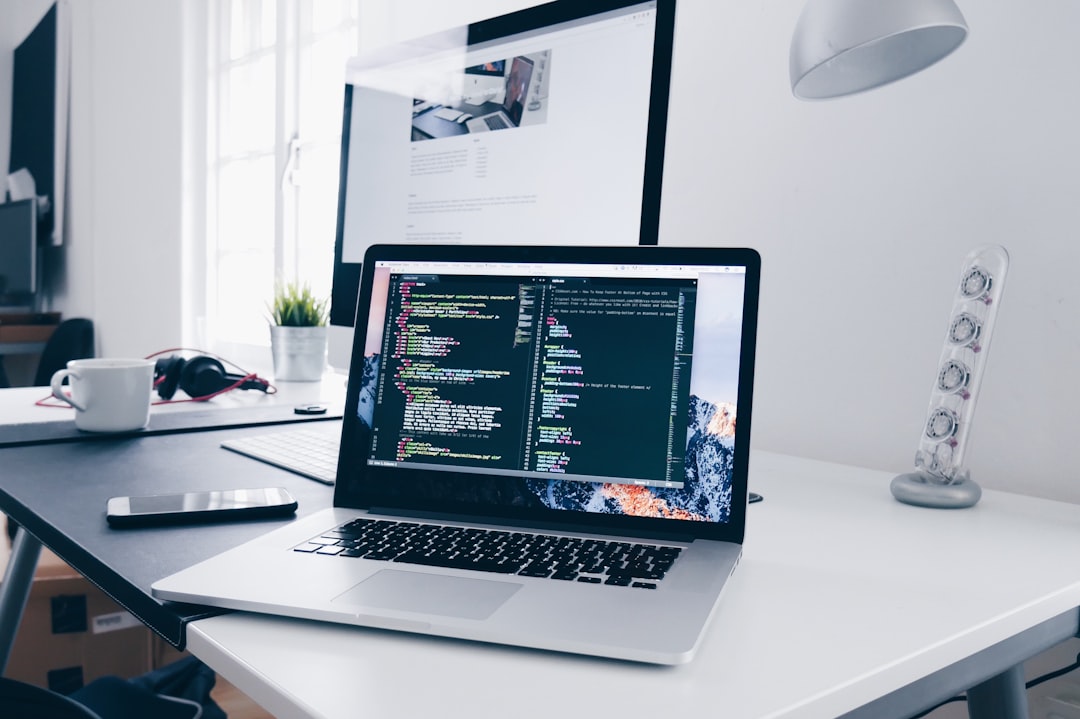Developing Code for Stable Diffusion Models with Python - A Comprehensive Guide
October 10th, 2023

Developing Code for Stable Diffusion Models with Python - A Comprehensive Guide
The Guide to Developing Code for Training Stable Diffusion Models with Custom Images Using Python
In the world of machine learning, a variety of models have been developed to analyze and interpret data. Among them is the diffusion model - a powerful tool that simulates the way information or characteristics spread within a network. The strength of this model lies in its stability, with results becoming more accurate over time as data continues to be processed.
Python, a popular high-level programming language known for its simplicity and readability, often takes center stage in building these models. With a rich ecosystem of libraries and resources designed specifically for data analysis and machine learning, Python provides developers with flexible and efficient tools to build stable diffusion models.
However, one challenge faced by developers is learning how to train these models using custom images. Using bespoke images can significantly enhance the model's performance, allowing it to generate more relevant and accurate results. As such, mastering the techniques for developing code that can effectively integrate custom images into the training process is crucial.
It's a complex task but fear not, whether you're a seasoned data scientist looking for a refresher or a beginner eager to learn, this guide will help you navigate the journey. Let's dive into the fascinating world of stable diffusion models and explore how we can leverage Python to train them with custom images.
Understanding the Basics of Stable Diffusion Models
What are Stable Diffusion Models?
Stable Diffusion Models are a significant concept in the field of machine learning and data science. In simplest terms, a diffusion model is a mathematical model that explains how a quantity (for example, heat) can spread out or "diffuse" through space over time. When we say 'stable', it indicates that the model will consistently perform well with accurate predictions, regardless of minor changes in the input data.
The importance of these models is immense as they help us understand and predict complex systems' behavior. They are primarily used in various applications such as finance to predict stock prices, in natural sciences for climate modeling, in social sciences to analyze public opinion, and even in artificial intelligence for image or text generation tasks. They also come into play in fields like physics and engineering, where they help in understanding the diffusion process, which is the fundamental principle behind many phenomena.
In the context of machine learning, stable diffusion models can be used to generate new data instances that are similar to those in the training set. This can be especially useful in scenarios where there's limited data available for training. With the right implementation, they can provide high-quality synthetic data, thereby improving the overall performance and stability of your machine learning models.
Why should we use Python for machine learning?
Python has become an industry-favorite when it comes to machine learning. This is due to various benefits that it offers, making it a standout amongst other programming languages.
First and foremost, Python has an easy-to-understand syntax which makes it highly readable. This enables developers to easily write complex algorithms without the hassle of mastering a convoluted language syntax. The simplicity of Python also leads to quicker development times as compared to other languages like Java or C++.
Another significant benefit of using Python for machine learning is its extensive range of libraries and frameworks. Libraries such as NumPy, Pandas, and Scikit-learn are powerful tools for data manipulation and analysis. These libraries not only reduce the time required for developing machine learning models but also ensure efficient execution of mathematical computations.
Moreover, Python's strong community support plays a crucial role in its popularity for machine learning. With thousands of developers contributing to its growth, finding solutions to problems or understanding new methodologies becomes easier. Whether you're a beginner or an experienced programmer, the Python community can provide assistance and valuable resources to enhance your machine learning journey.
In summary, Python's readability, comprehensive libraries, and supportive community make it an optimal choice for machine learning. Regardless of your level of expertise in programming, Python has something to offer for everyone in the realm of machine learning.
Setting Up the Python Environment for Machine Learning
How to Install Anaconda and Jupyter Notebook?
Starting your journey into Python and Machine Learning necessitates the use of some powerful tools. Anaconda is a free and open-source distribution of Python and R programming languages used for scientific computing, while Jupyter Notebook is a web-based interactive computational environment where you can combine code execution, rich text, mathematics, plots, and rich media.
To get started with these tools, follow this simple installation guide:
Download Anaconda: Visit the Anaconda download page. Choose the appropriate version for your operating system (Windows, macOS, or Linux) and download the installer.
Install Anaconda: After downloading, run the installer. During the process, ensure to check the box that says "Add Anaconda to my PATH environment variable" in the installation options.
Verify Installation: Open your terminal (command prompt for Windows users) and type
conda list. If Anaconda has been installed successfully, a list of packages appears.Install Jupyter Notebook: Although the Jupyter Notebook comes pre-packaged with Anaconda, if it didn't install for some reason, it could be added manually. In your terminal, type
conda install jupyter.Launch Jupyter Notebook: In your terminal, navigate to your working directory using the
cdcommand. Once you are in the correct directory, typejupyter notebook. This command opens a new tab in your default web browser with the Jupyter Notebook interface, ready for your python coding!
Remember, installing Anaconda and Jupyter Notebook sets the foundation for diving deeper into machine learning using Python.
Essential Python Libraries for Machine Learning
Before diving into the application of machine learning in Python, it is essential to familiarize yourself with some key libraries that are crucial for any data scientist or machine learning enthusiast. These libraries not only make our jobs easier but also provide a robust platform to develop and deploy machine learning models.
Firstly, NumPy (Numerical Python) is one of the most fundamental packages in Python for numerical computation. It offers capabilities such as support for multi-dimensional arrays and matrices, along with a large collection of mathematical functions to operate on these arrays.
Secondly, Pandas, another vital library, provides fast, flexible, expressive data structures designed to make working with structured (tabular, multidimensional, potentially heterogeneous) and time series data both easy and intuitive. It aims to be the fundamental high-level building block for doing practical, real-world data analysis in Python.
Next up is Matplotlib, a plotting library for creating static, animated, and interactive visualizations in Python. It's a must-have for anyone intending to present their findings visually, which is an integral part of data science.
Last but not least, Scikit-learn is a library that provides simple and efficient tools for predictive data analysis. It features various classification, regression, and clustering algorithms, and is designed to interoperate with NumPy and Pandas.
Together, these four libraries form the backbone of most machine learning projects in Python. By mastering them, you'll be well on your way to developing effective and efficient machine learning models.
Developing the Code to Train a Stable Diffusion Model
Coding from Scratch vs Using Existing Libraries
When diving into the realm of data science, one important decision you'll need to make is whether to build your machine learning models from scratch or utilize existing libraries. Both approaches have their own merits and drawbacks, and the choice largely depends on the complexity of your project and your proficiency in coding.
Writing code from scratch allows you a greater degree of flexibility and customization. You can tailor your model according to the specific requirements of your project. It also provides a deep understanding of the underlying algorithms and processes, since you would be implementing every detail yourself. However, this method can be time-consuming and requires strong coding skills and a thorough understanding of machine learning principles.
On the other hand, using existing libraries significantly simplifies the process. Libraries like NumPy, Pandas, Matplotlib, and Scikit-learn offer pre-written functionalities that can perform complex tasks with just a few lines of code. They are extensively tested and optimized for performance, thus providing reliable and efficient solutions. Furthermore, they often come with comprehensive documentation and community support, which can be enormously helpful.
However, it's crucial to remember that while using an existing library can speed up your work and make things easier, it may not offer the same level of customization as writing your code from scratch. Plus, relying too much on libraries might limit your depth of understanding of the underlying mechanisms of the algorithms.
Therefore, the choice between coding from scratch and using existing libraries should be made considering these factors. The key is to balance efficiency with knowledge and understanding.
Step-by-step Guide to Develop Code
To get you started on your journey into developing code for training stable diffusion models, let's walk through the process step by step. Our aim here is to make it as easy and intuitive as possible.
Understand the Problem: Before diving into coding, it's crucial to have a comprehension of what problem the model is intended to solve. Understanding the problem will guide the selection of an appropriate model and the subsequent steps.
Data Collection: This involves gathering relevant data that the model will learn from. Depending upon the problem at hand, this could be images, text, or any other kind of data. Remember, the quality and quantity of data can greatly affect the precision of your model.
Data Preprocessing: This step involves cleaning and transforming raw data into an understandable format. Techniques used may include normalization, encoding categorical variables, dealing with missing values among others.
Model Selection: Based on the problem you're solving and the type of data, choose an appropriate machine learning model. For instance, in this case, we are working with a stable diffusion model.
Training the Model: At this stage, you feed your preprocessed data into the model. The model learns from this data over several iterations, a process known as 'training'. Python has various libraries such as TensorFlow, PyTorch, and Scikit-Learn that can help with this.
Testing and Evaluation: After training, test the model using a previously unseen data set (test data). This provides insight into how well the model has learned and whether it's ready for deployment.
Model Deployment: Once satisfied with the model's performance, deploy it to begin making predictions on real-world data.
Remember, developing code for machine learning involves a lot of trial and error, so don't be discouraged if things don't work out perfectly the first time. With each attempt, you'll gain a deeper understanding of the model and become more adept at coding.
Using Custom Images for the Diffusion Model Training
The Importance of Using Custom Images
When it comes to machine learning and model training, custom images play a significant role. These tailor-made datasets allow you to better understand the depth of your models by providing unique challenges and scenarios.
The importance of using custom images cannot be overstated. Custom images are specifically chosen or created to test various aspects of a machine learning model. They provide an excellent way to customize testing conditions and experiment with different parameters in a controlled environment. This makes them invaluable for fine-tuning models and for ensuring that they perform optimally when deployed.
But what really sets custom images apart is their potential for innovation. With these unique datasets at our disposal, we can push our models to the limit, discovering new uses and applications for our technology along the way. When used effectively, they can even help us recognize and correct bias in our models, leading to more fair and ethical outcomes.
In terms of benefits, custom images offer greater control over the nature and complexity of data being processed. This enables developers to create specific scenarios or conditions under which the diffusion model operates, giving them deeper insights into how their models function under various circumstances. This ability to customize and control the learning environment is what truly separates custom images from generic ones, making them an essential aspect of any machine learning toolkit.
So, whether you're looking to perfect your existing models or explore uncharted territories in the field of machine learning, remember - custom images can be your greatest ally.
How to Implement Custom Images in Model Training?
Implementing custom images in model training is an integral part of achieving a more accurate and versatile machine learning model. Here is a step-by-step guide on how you can do this:
Step 1: Gather the images
The first step is gathering your custom images. Make sure they are relevant to what your model is intended to learn or predict. These images can be anything from photographs, screenshots, drawings, or any other types of image files.
Step 2: Preprocessing the images
Before feeding these images to your model, they need to be preprocessed. This usually involves resizing the images to a uniform size, normalizing the pixel values, and possibly converting the images to grayscale depending on the requirements of your model. Python libraries like OpenCV and Pillow can help accomplish these tasks.
from PIL import Image
import os
# Define the path to your images
img_dir = '/path/to/your/images'
# Loop through each image in the directory
for filename in os.listdir(img_dir):
if filename.endswith('.jpg') or filename.endswith('.png'):
img = Image.open(os.path.join(img_dir, filename))
# Resize the image
img = img.resize((width, height))
# Convert to grayscale if necessary
img = img.convert('L')
# Save the processed image
img.save(os.path.join('/path/to/save/images', filename))Step 3: Load the images into your Python environment
After preprocessing the images, they are now ready to be loaded into your Python environment for use in the model training. This can be done using Python libraries such as Keras' ImageDataGenerator or manually, by creating an array of the pixel values for each image.
from keras.preprocessing.image import ImageDataGenerator
# Define the path to your images
img_dir = '/path/to/your/images'
# Initialize the ImageDataGenerator
datagen = ImageDataGenerator(rescale=1./255)
# Load the images from the directory
train_generator = datagen.flow_from_directory(
img_dir,
target_size=(width, height),
batch_size=batch_size,
class_mode='binary')Step 4: Use the images in training your model
Now that the images are loaded into your Python environment, they can be used to train your model. Generally, this involves passing the images (and their corresponding labels if it's a supervised learning model) to the fit method of your model.
# Define your model
model = ...
# Train your model on the images
history = model.fit(
train_generator,
epochs=num_epochs)In these steps, we have seen how to implement custom images in model training effectively. Following this guide will enrich your machine learning model and increase its potential for accurate predictions and insights.
Other articles
August 30th, 2023
What This AI Can Do Will Blow Your Socks Off
nks to Wirestock for sponsoring … read more...
October 1st, 2023
Code Tutorial: Generating Synth Music with Opensource Musicgen Model
training your model, this step-by-step tutorial guides you through every detail. read more...
August 28th, 2023
A1111 1.6 – Amazing New Features and Changes
meta data for Checkpoints. read more...
August 31st, 2023
How to Access NEW Midjourney Features on OLD Images
anning, but how can you use these features on your old images? Well, there is one super easy way to pull this off, check it out in this video! read more...
September 2nd, 2023
Sound File Editing & Conversion – A Comprehensive Tutorial
etween formats like WAV, MP3 and M4A, and discover the best tools for editing and converting. read more...




